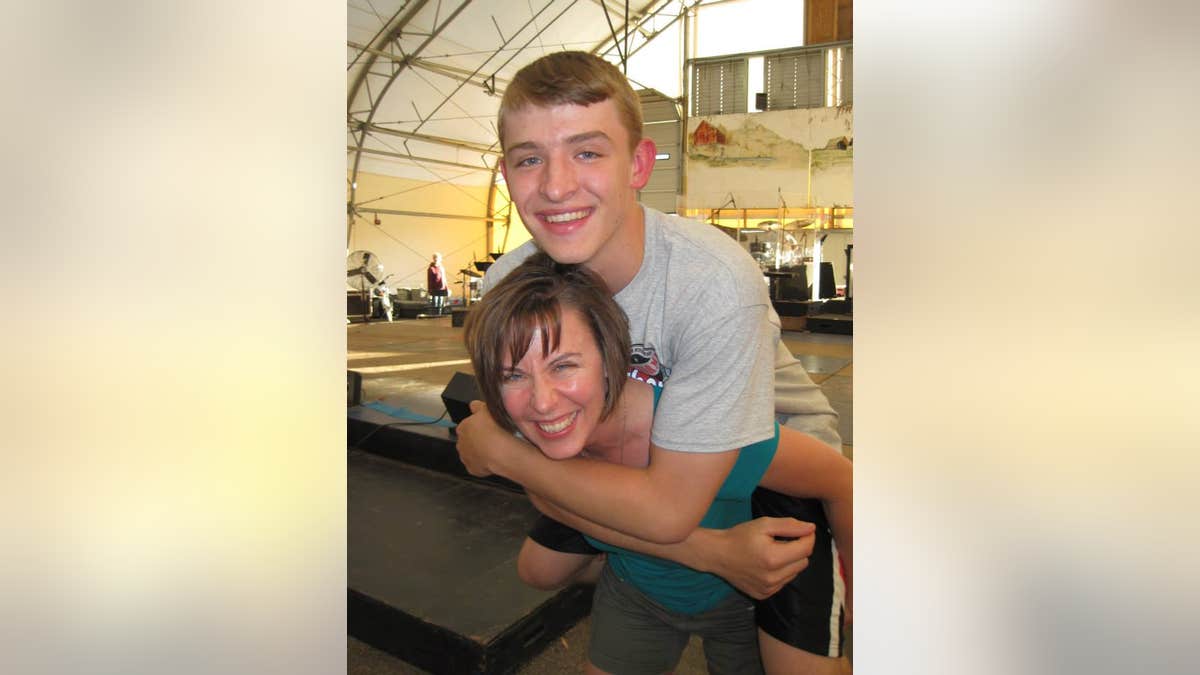
Author Jennifer Fink and her son Nate. (Courtesy of the author)
Last week three of my four boys were herded into school-sponsored assemblies and asked to stand, raise their hands and pledge to never, ever hurt a woman. While their female classmates remained seated, my boys faced intense pressure to say:
I promise
To never ever
Hit, hurt, or otherwise harm
A woman, girl, or child.
I understand
That I am bigger and stronger
Than many women, girls, and children.
Therefore it is my DUTY
To NEVER HARM them,
Protect, Respect, Honor, and Love them
No matter what.
Aghast, my 17-year-old son walked out. Less than two hours later, he went to choir practice, where he and his classmates practiced a parody of "Cell Block Tango" from the musical "Chicago" that features the “six merry murderesses of Cook County Jail” singing about killing their lovers. Here's one verse:
Hah! He had it coming
He had it coming
He took a flower
In its prime
And then he used it
And he abused it
It was a murder
But not a crime!
Ironic, eh?
Most males do not hurt females or other males, or even dogs and cats. Yet they’re all treated as potential perpetrators, and our boys feel the weight of this prejudice.
The school assembly was well-intentioned. It was delivered by a man whose 19-year-old daughter was sexually assaulted and brutally murdered by a male “friend.” According to material sent home before the assembly, the presentation would contain a “call to action to raise awareness, examine our culture, and ultimately END male violence against women.”
I noted that very specific phrasing – end male violence against women, vs. simply ending violence – but hoped it was an example of poorly chosen words.
I was wrong. And so was the presentation, which unfairly and inaccurately implied that every male sitting in the audience is a potential perpetrator of violence.
It’s true males commit more violent acts than females: think school shootings, homicides and terrorist acts. But focusing on male violence against women ignores much of what is known about violence in general—while unfairly stigmatizing half of the population and poisoning the relationship between the sexes.
The truth is that males are often victims of violence.
Male-on-male violence is extremely common; and contrary to the “facts” my boys learned at school, females hurt males too.
According to recent surveys by the National Institute of Justice and Centers for Disease Control, some 40 percent of those reporting intimate partner violence in the last year are men. Nearly 30 percent of intimate homicide victims are men.
My sons learned nothing of this at the assembly. "The overall idea was that we, as men, need to fight the violent, felonistic ways inside of us," my son said later.
What was missing from the assembly, and so many others like it, is that the boy who committed that murder is, by definition, a deviant. He is not representative of all men or even most men. His behavior deviated sharply from the norm. But that distinction is neglected.
Most males do not hurt females or other males, or even dogs and cats. Yet they’re all treated as potential perpetrators, and our boys feel the weight of this prejudice.
Here was my son’s takeaway from the assembly: “Men are just monsters that society needs to put in little cages.”
It’s a skewed, inaccurate message—and it’s one we need to erase from our public rhetoric, schools, laws and ideology.
It is not okay to slander half of the population in an attempt to protect the other half.
I won’t stand for it anymore, and neither will my son.




















